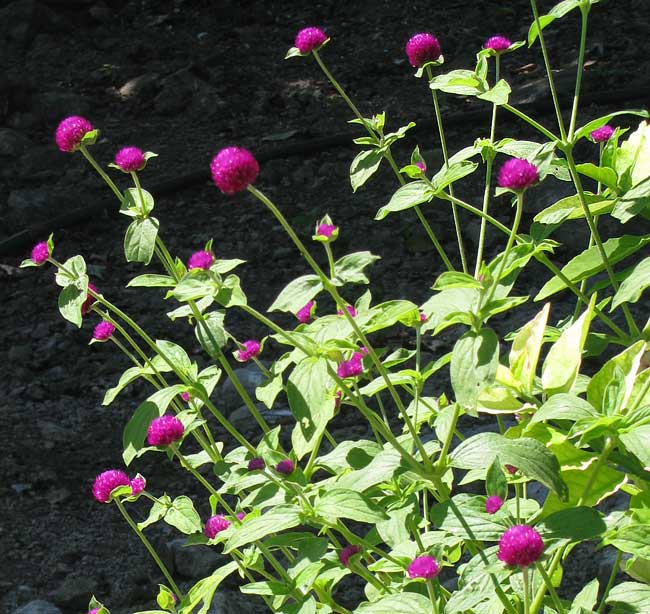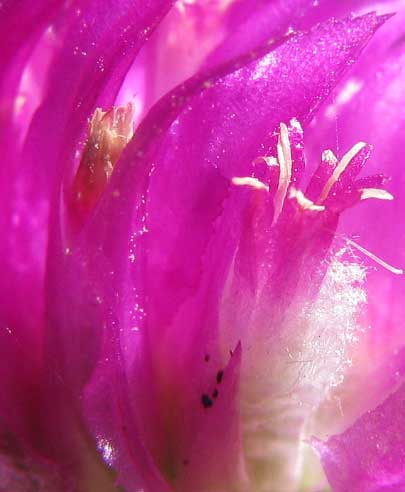Excerpts from Jim Conrad's
Naturalist Newsletter

from the October 17, 2010 Newsletter issued from Hacienda Chichen Resort beside Chichén Itzá Ruins, central Yucatán, MÉXICO; limestone bedrock, elevation ~39m (~128ft), ~N20.676°, ~W88.569°
GLOBE AMARANTH
In Hacienda Chichén's garden a pretty, two-ft-high herb with interesting flowers is blooming, as shown above. The colorful heads look like those of clover, but the leaves are very different. If you break open a head you find the flowers well camouflaged, as seen below:

This is Globe Amaranth, sometimes known as Bachelor's Buttons, though that name is better applied to a very different plant. Globe Amaranth is GOMPHRENA GLOBOSA, a member of the Amaranth Family, the Amaranthaceae.
In the last picture the flower is the vertical, cylindrical thing at the right. It appears to have white fuzz growing up its right side, but the fuzz grows on the rose-colored perianth, a perianth being what the structure is called when the calyx and corolla are indistinguishable, or fused together.
More interesting is the flower's jagged, white-tipped orifice. The white tips are anthers releasing whitish pollen. A typical stamen's baglike anther resides atop a slender, usually white, matchstick-like stem. Here the rose-colored filaments of five anthers have grown together forming a closed cylinder surrounding the female pistil -- the stigmas, deeply split style and ovary. If you count more than five anthers its because there's an extra filament "tooth" or lobe beside each anther, plus each of the stigmas also are white.
Then to top it all off, at the base of each flower arise three rose-colored, jagged-edged scales, two of them overtopping the flowers. When you look at the "globe" from a distance, mainly you're seeing rose-colored scales.
Those scales constitute one of the distinguishing features of the Amaranth Family. Usually in this family you have to search among the scales to find the inconspicuous flowers. Since the scales often are colorful and don't wilt easily, many members of the family are known as an "everlasting" -- good for indoor bouquets because they retain their shape and color after drying.
Globe Amaranths are thought to be native to the American tropics. Heads of the wild species are magenta, but cultivars have been developed with other colors, including purple, red, white, pink and lilac.